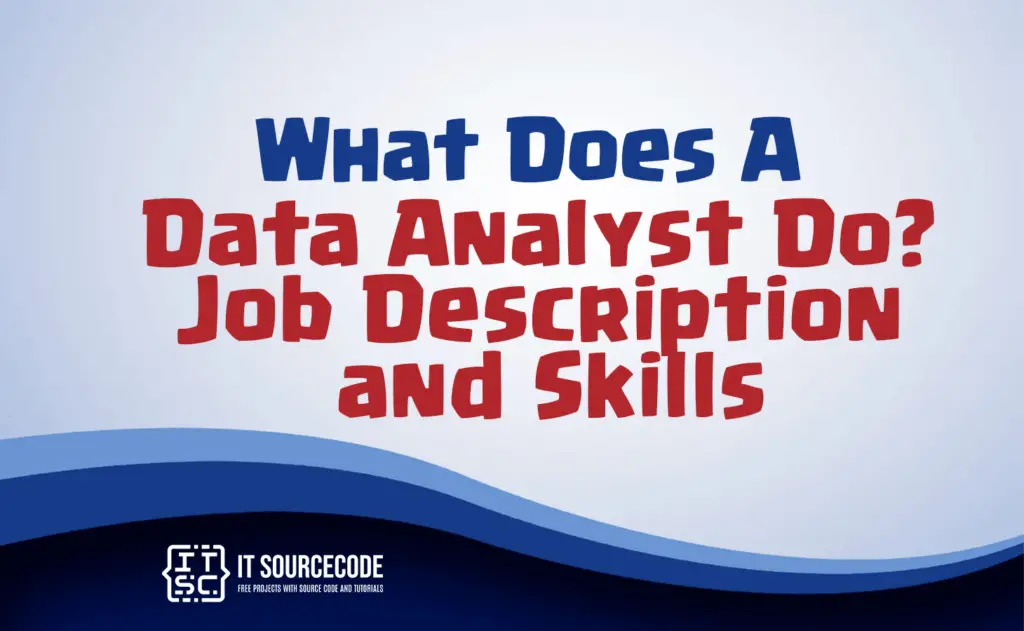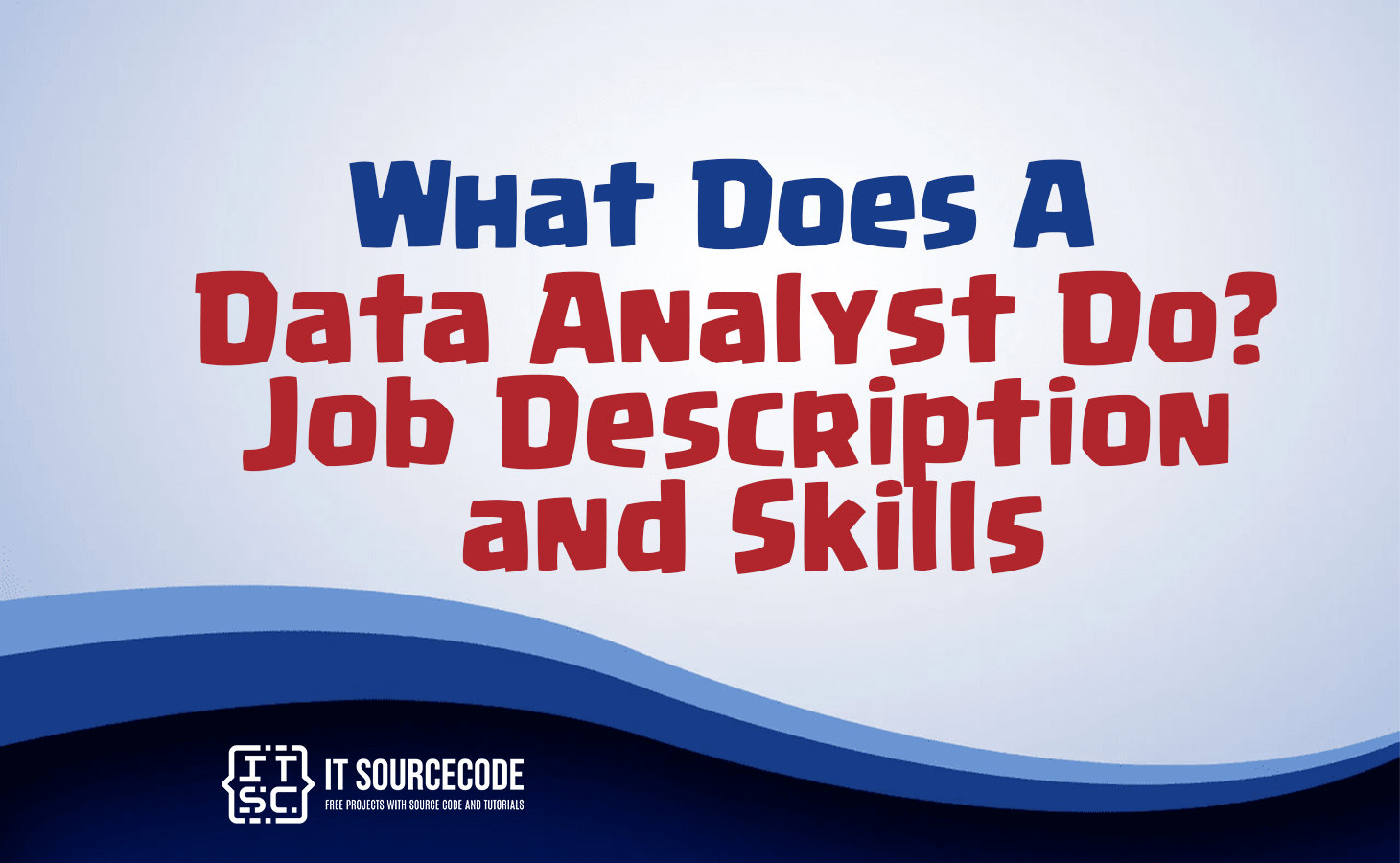WHAT DOES A DATA ANALYST DO? JOB DESCRIPTION AND SKILLS – Data analysts explore data to gain valuable insights about a company’s customers and suggest solutions to address challenges. They play a key role in communicating this information to top management and other stakeholders.

What is an Data Analyst?
Data analysts collect, refine, and interpret data sets with the goal of answering specific queries or solving problems. They work in various fields such as business, finance, criminal justice, science, medicine, and government.
Types of Data Analyst?
- Medical and Health Analysts: These use data from multiple sources to improve healthcare outcomes and focus on the business side of healthcare to improve patient care and operational efficiency.
- Market Research Analyst: Collect and analyze consumer and competitor data to assess market conditions and predict future sales.
- Business analyst: Use data to gain insights and recommend improvements across the organization. Identify issues in areas such as IT processes, organizational structure and employee development, with the goal of improving overall efficiency and reducing costs.
- Business Intelligence Analyst: Analyze data and information to support effective business decisions. Collect, cleanse, and analyze sales, revenue, market intelligence, and customer engagement data.
- Operations Research Analyst: Use advanced techniques such as optimization, data mining, statistical analysis and mathematical modeling to solve complex problems.
- Intelligence analyst: Examine information and data to identify and address security concerns. They analyze internal and external statistics, databases, field reports, summarize
What does a data analyst do on a daily basis
They are responsible for analyzing data sets to find solutions to business-related customer problems. They communicate their findings to management and other stakeholders. Also, they work in a variety of industries, including business, finance, criminal justice, science, healthcare, and government.
Required Skills for Data Analyst Jobs
To be a successful, you need the following key skills:
- Data cleansing and preparation: Ability to cleanse and prepare data by identifying and addressing discrepancies, missing values, and outliers.
- Data analysis and exploration: Ability to analyze and explore data to uncover patterns, trends and insights.
- Statistics expertise: In-depth knowledge of statistical concepts and techniques to perform thorough data analysis and draw meaningful conclusions.
- Data visualization and analysis: Knowledge of using data visualization tools and techniques to present data clearly and effectively.
- Reports and Dashboards: Ability to create comprehensive reports and interactive dashboards to communicate results and key insights to stakeholders.
- Communication and Writing: Strong oral and written communication skills to effectively communicate complex data analysis results to both technical and non-technical people.
- Domain know-how: They are familiar with the specific industry or domain they work in, so they understand the context and business needs.
- Solution-oriented approach: A problem-solving mindset focused on finding practical and workable solutions based on data analysis.
Background in mathematics, statistics, computers, science, information management, or economics is a solid foundation to pursue in the career.
How long does it take to become a data analyst?
The time it takes to develop the skills required varies widely, from 10 weeks to 4 years. The length of time will depend on the path chosen by the individual and the specific learning resources and opportunities available.
What does a data management analyst do?
They are tasked to do the job of monitoring and maintaining the databases. Their primary responsibilities include ensuring data security and identifying ways to improve users’ efficiency in accessing data. This may include measures such as migrating databases to cloud-based servers to optimize system resources.
What does a data quality analyst do?
Their role is to critically ensure data accuracy and reliability. Set standards, identify anomalies and errors, and work to resolve data-related issues. This career has evolved with a data infrastructure that transforms raw data into meaningful insights and powers diverse applications.
What does a senior data analyst do?
Also known as computer systems analysts, help companies interpret statistical and numerical data to evaluate and compare business performance. They play a key role in analyzing data to provide insights and recommendations for decision-making.
Conclusion
In summary, data analysts play a key role in collecting, refining, and interpreting datasets to answer specific questions and solve problems. Additionally, they work in a variety of industries including business, finance, criminal justice, science, healthcare and government. They leverage their analytical skills and expertise to contribute to informed decision-making and drive improvement in a variety of areas.
FAQs
- What are the Data Analyst Duties?
Responsible for analyzing data using statistical techniques, implementing and maintaining databases, gathering data from primary and secondary sources, and identifying trends and insights from data.
- Who do data analysts work with?
Collaboration depends on the industry they work in. He can work with experts in finance, business, science, government, medicine, and other fields.
- What are some example data analyst interview questions?
The common interview questions may include explaining the best practices for the data cleaning, technical tools used for analysis and presentation, descriptive, predictive, and prescriptive analytics.
- What qualifications are required for a data analyst job?
Common qualifications suitable for the job includes a bachelor’s degree in science, mathematics, or a related field, preferably a graduate degree in data analytics or a related field.
- What is the role of a data analyst?
An expert who collects, interprets, and analyzes large data sets to derive insights and support decision making. We work with different types of data and transform raw data into meaningful information using statistical techniques, data visualization tools, and programming languages.

